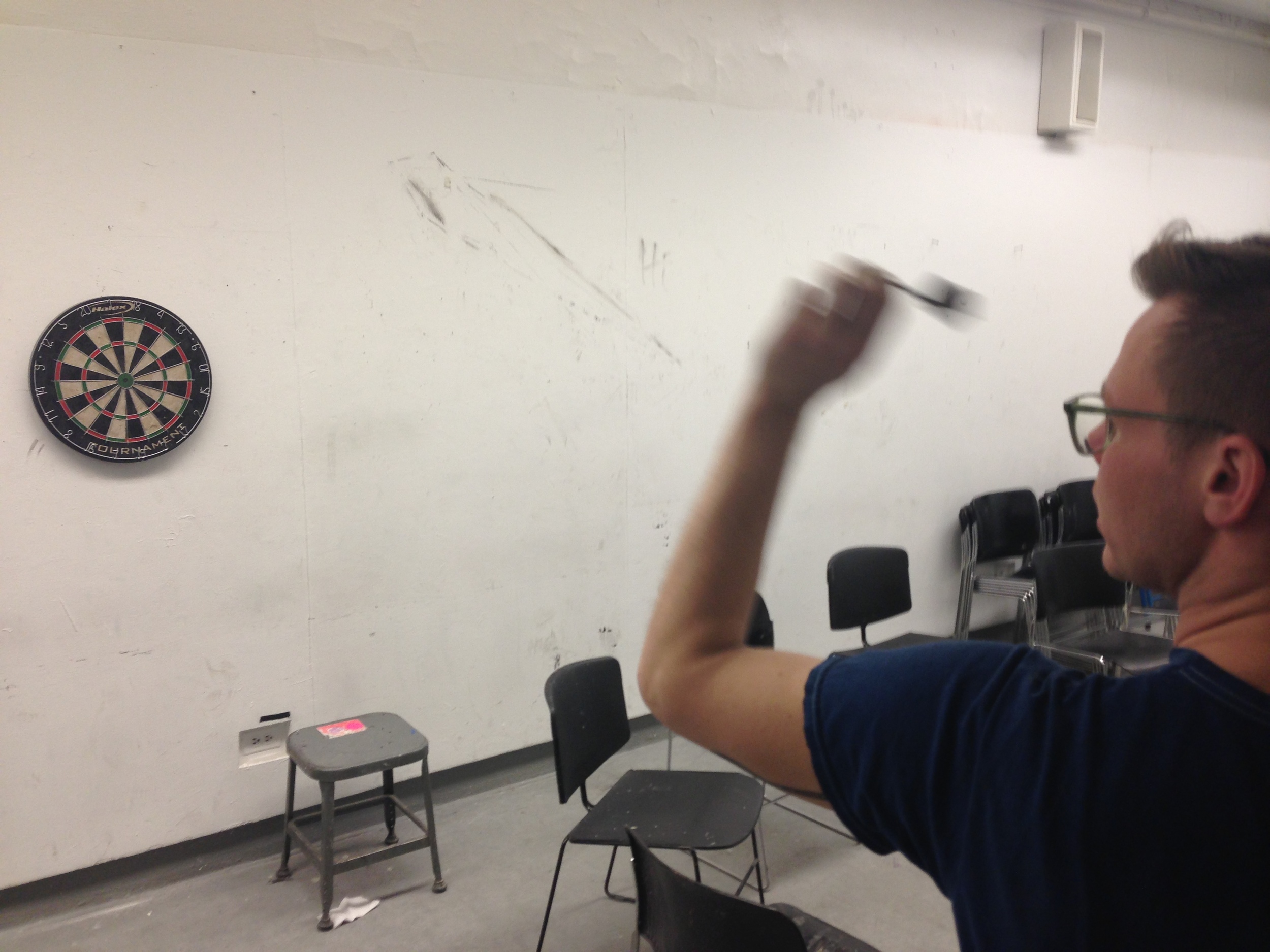
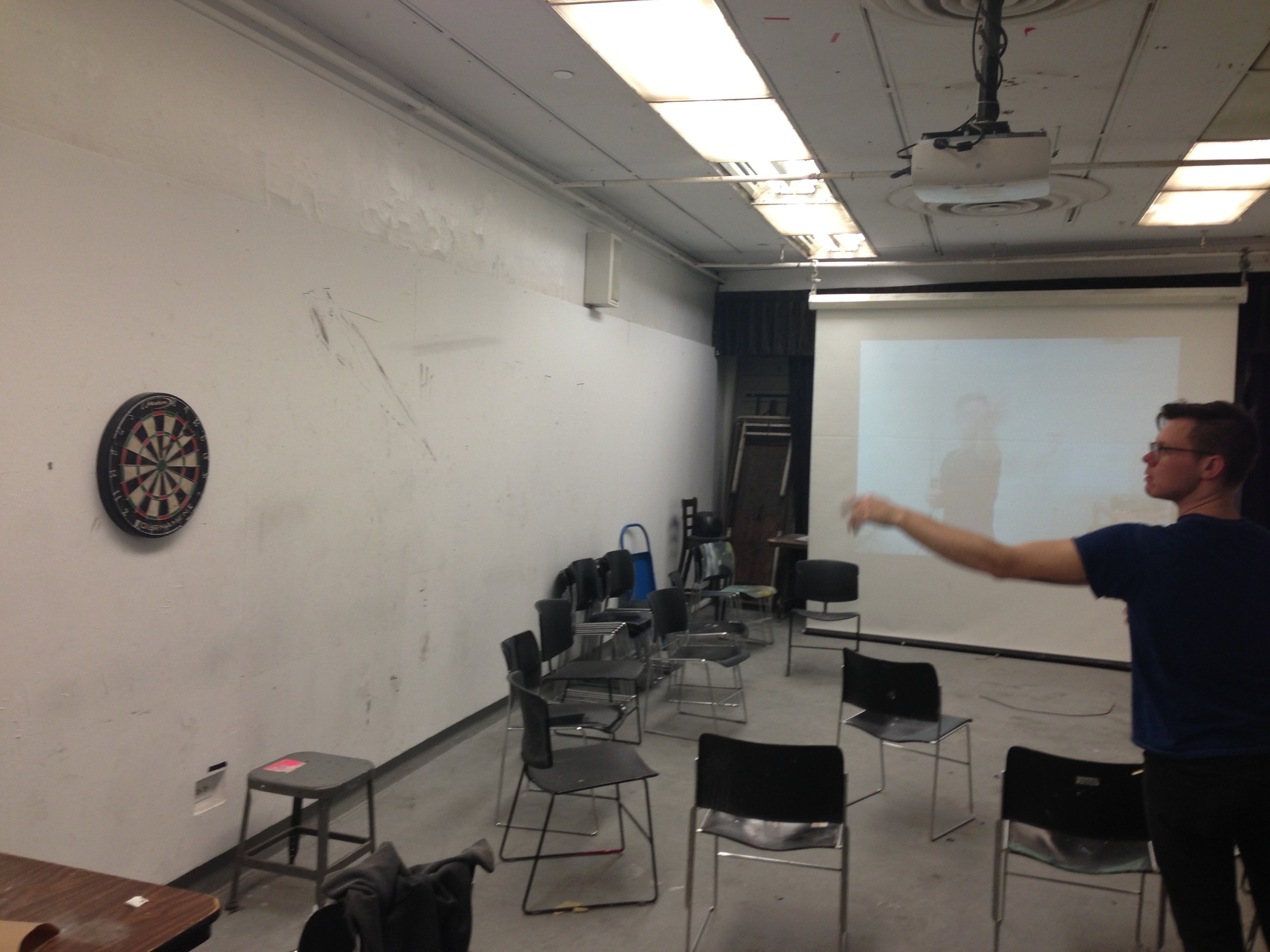
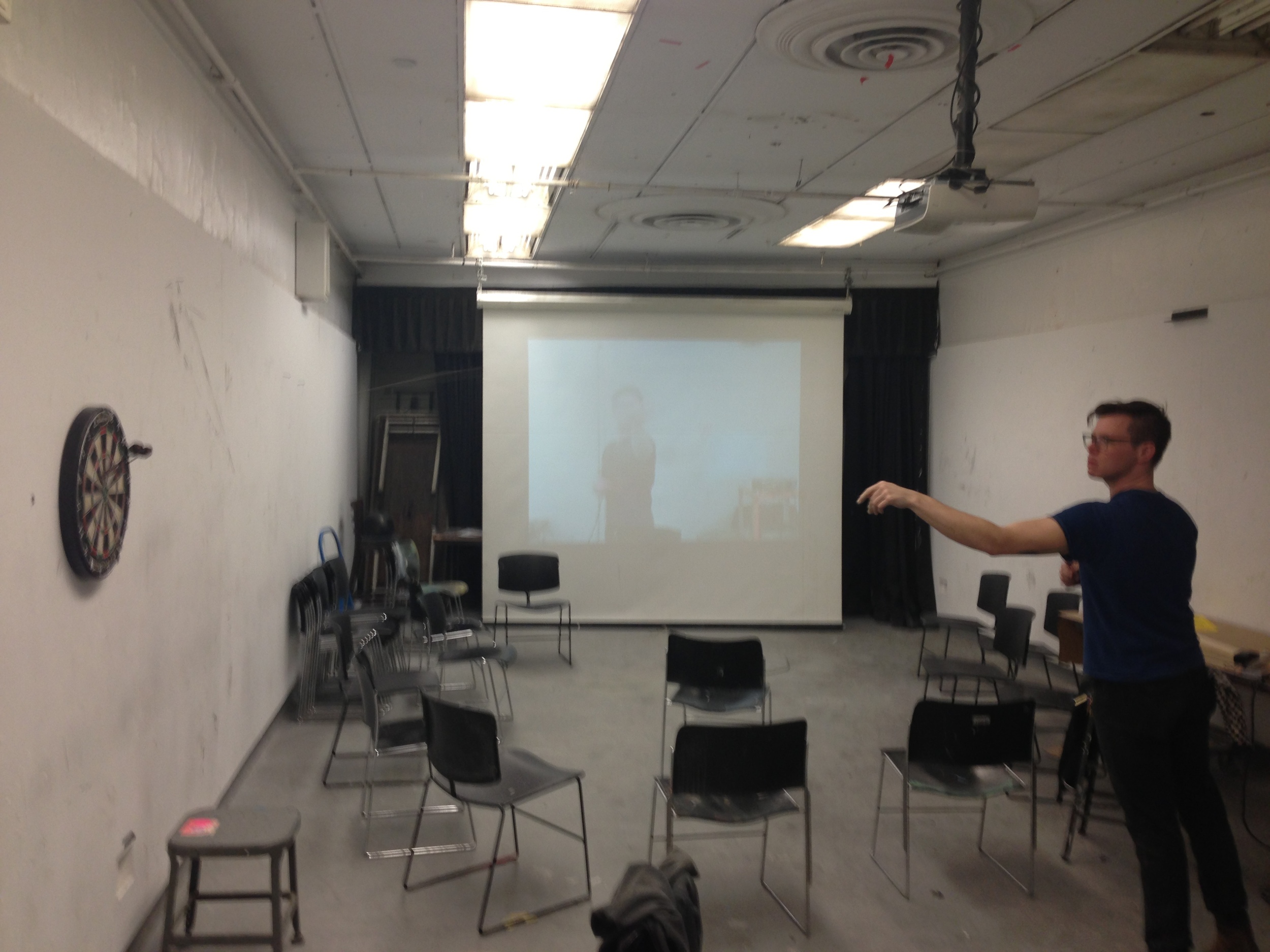
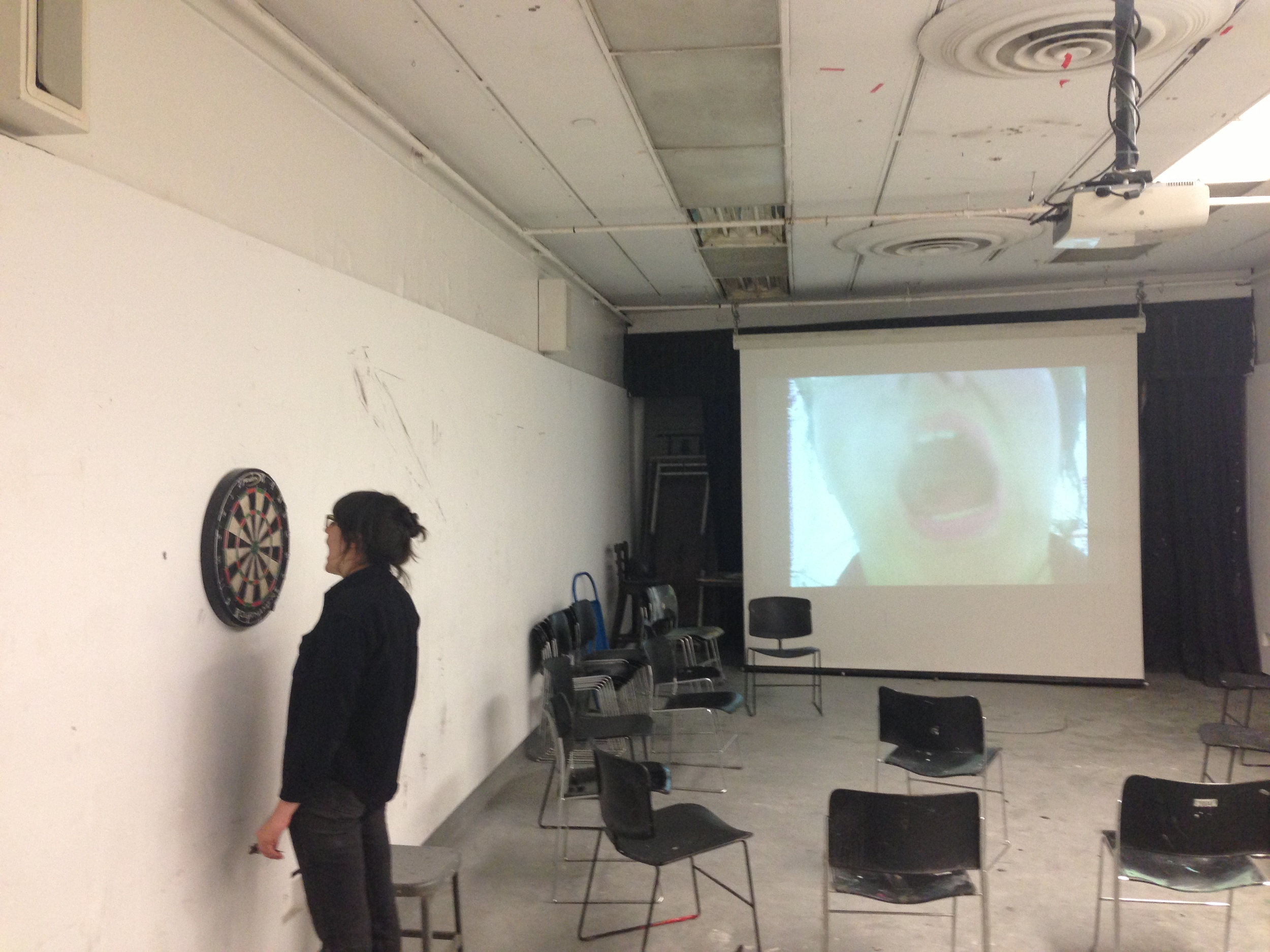
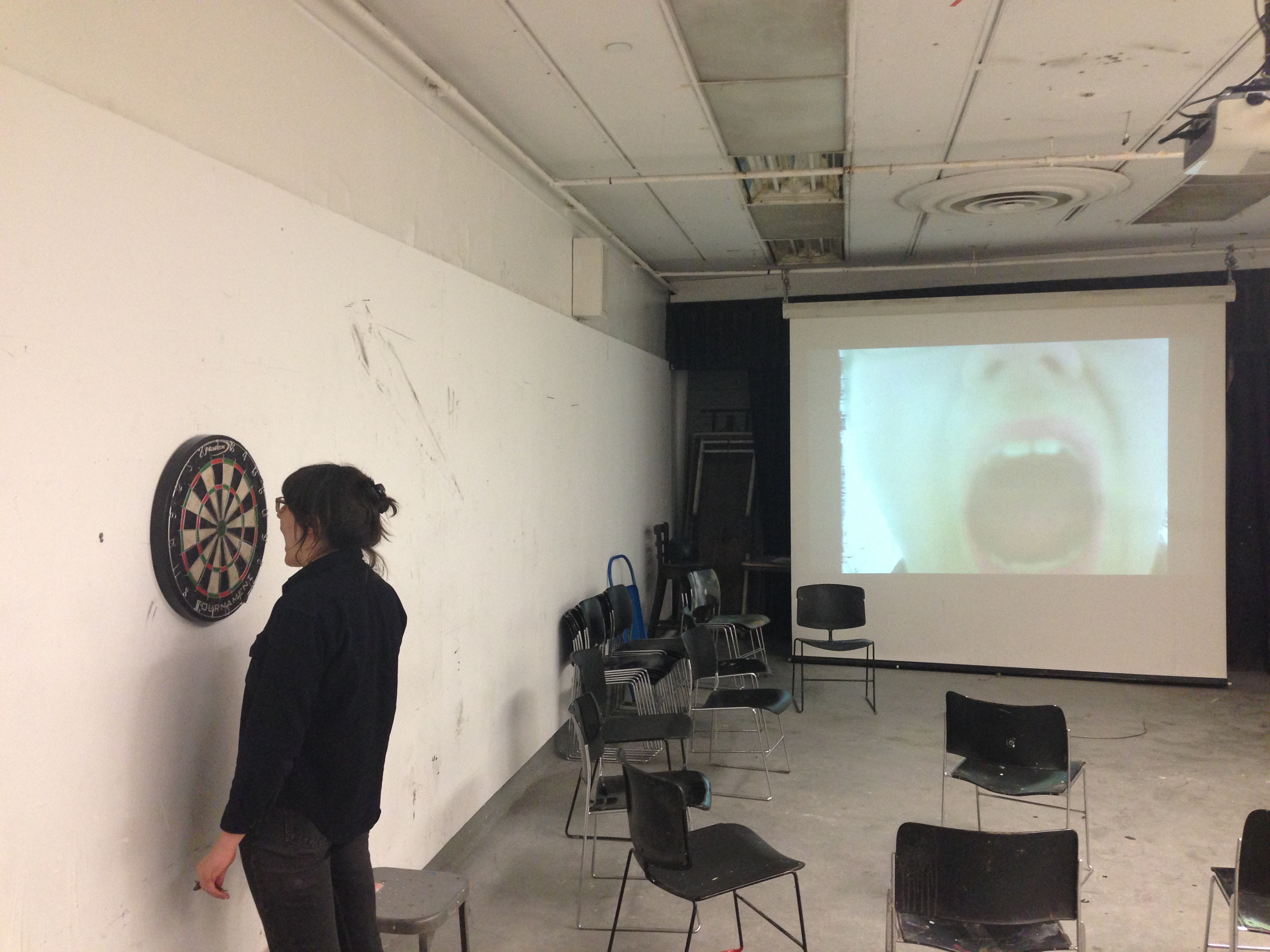
Bull's Eye
Dartboard, wireless camera, projector
2013
“The City should be turned into a medieval-style walled enclave to prevent terrorist attacks…”
— City official, The Times, 25 April 1993 via Landscapes of Defense, ed. John R. Gold and George Revill
“All Titanic Passengers Safe; Towing to Halifax”
— The Times, 14 April 1912
Surveillance is the control of visual and auditory space and experience. From the physical presence of police and sirens to the implicit supervision of the video camera, surveillance — watching, looking, and listening — creates a spatial-temporal fortress. Intended to address issues of crime, the threat and fear of violence, surveillance employs visual, auditory, and psychological tools to militarize public and private spaces. This technological extension of authority is finds roots in power-relations and societal controls of communication. Its only limits are people and physics, which together emit a lot of noise.The surveillance fortress is born from and built with noise — interference patterns and images of the mundane — all received, recorded, and (then what?).
When the HMS Titanic sunk in 1912, interfering radio signals caused wireless operators to report to media that the passengers and ship had been rescued. The confusion was pivotal in bringing about the formation of airwave regulation and frequency allocation. These controls, meant to limit noise, and initiated a fear of technology and asserted that these newfangled tools of communication required an organizational authority. Control by telecommunication by both national governments and the private sector was born. Eventually, telecommunication fulfilled its promise as a primary source of power and violence:
“The degree to which precision weaponry revolutionized contemporary warfare is the precisely the degree to which contemporary warfare, is today, based upon television”
— Surveillance Camera Players, We Know You Are Watching, p. 197
Since the early days or radio, control of the broadcast has extended its boundaries beyond the ether to physical, public, and private landscapes. This control is manifest in surveillance technique and technology. However, there is no neat way to allocate or regulate human behavior and creativity. Reducing the noise and interference of human space may prove to be impossible, but until that day, surveillance will be the pursuit of noise and confusion more than anything else. There is hope in the noise, for it cloaks everything that goes on outside of the fortress.